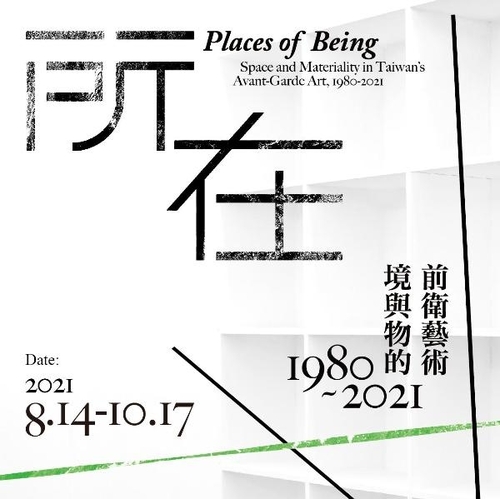Artists Lai Chi-Man, Lin Hong-Wen, Wu Tung-Lung, and Hsu Jui-Chien are invited to participate in the group exhibition "Places of Being — Space and Materiality in Taiwan’s Avant-Garde Art, 1980-2021".
Artists Lai Chi-Man, Lin Hong-Wen, Wu Tung-Lung, and Hsu Jui-Chien are invited to participate in the group exhibition "Places of Being — Space and Materiality in Taiwan’s Avant-Garde Art, 1980-2021" in National Taiwan Museum of Fine Arts, which started from August 14th to October 17th.
Places of Being — Space and Materiality in Taiwan’s Avant-Garde Art, 1980-2021 Curators: CHIANG Po-Shin, HSU Yuan-Ta “Place of being” refers to things and the place where they exist. A “place” can be a space, an environment, an area, a location, or a territory, while “being” means dwelling in space and time. Treating place and being as its coordinates, this exhibition seeks to present the kaleidoscopic manifestation of avant-garde art in Taiwan after the liberation of space and media. Taiwanese art gradually evolved from the paragon of modern painting in the 1980s into the contemporary art familiar to us today. “The second wave of modern art movement” deemed avant-garde at that time has fostered a riotous profusion of development. The exhibition is going to review a thread of these avant-garde movements by means of a more global and critical reference system. Since the 1980s, the homecoming of artists who resided or studied abroad, along with the establishment of the three major public museums and municipal cultural centers in Taiwan, has enabled avant-garde art to transcend the spatial confines of traditional 2D frame and 3D pedestal. A diverse array of media entered exhibition venues, and introduced the culture, history, and nature they inherit. Artworks are no longer simulacra of physical space. Avant-garde artists liberate their works from frames and pedestals into physical space. To put it another way, creative practices exist not simply in frames and pedestals but also in real-world places. Materials are not just the media for contents and forms but also integral to them. Following Richard Lin, many Taiwanese artists overseas returned to Taiwan and partook in the competitions and exhibitions organized by public or private institutions (e.g. “Play of Space,” “Transcendimensional Space,” “Lion Art New Artist Award,” and Taipei Fine Arts Museum’s exhibition series “Contemporary Art Trends”), which catalyzed and accelerated the development of space and materiality in Taiwan’s avant-garde art. In addition, homecoming artists like Lee Tsai-Chien, Tsong Pu, Chen Shu-Ming, Yeh Chu-Sheng, Jun T. Lai, Lai Chi-Man, Lu Ming-Te, and Kuo I-Fen entered the education system and methodically advanced the concepts of space and materiality through arts education and exhibitions, which in turn nurtured the next-generation talent. The multithread development of our society and the infoxication from schools and the Internet have promoted young artists’ awareness in a multifarious fashion. In the virtual cyberspace, young artists’ bodies become compound interfaces and manifest themselves as small user groups in terms of space and materiality in the digital era. They managed to shake off the shackles of the linear development of occidental modernism and the approach of purity. They experience “place of being” with their bodies, insofar as to create local space and materiality. Within this context, this exhibition divides the space and materiality in Taiwan’s avant-garde art since 1980s into six major sections, including Frame Liberation, Redefining “Sculpture,” Pluralistic “Painting,” The Dialectic of Media, Space and Site, and The Traverse Generation, in order to demonstrate their existence and evolution, the liberation of space and media, the emerging creative media, and the latest development of space and materiality in avant-garde art. The exhibition does not limit its exploration of multi-layered, complex thinking of modeling to any single category and linear development. Rather, it attempts to systematically and dialectically present the space and materiality in avant-garde art, thereby delving into the multiple contexts in which the artists are situated and investigating how their quests and breakthroughs can carve out a contemporary path of transdisciplinary practice.
Exhibition dates: 2021.08.14-2021.10.17
Exhibition venues: National Taiwan Museum of Fine Arts
Link to website
